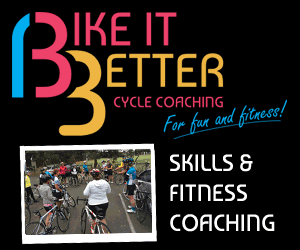Margot McGovern asks: which bike holiday is right for you and what do you need to know before you go?

Bike holidays are a great way to actively explore the world. They vary from hardcore touring, where you carry everything on your bike, to booking a hotel and taking day trips on hire bikes. There are also fully supported bike riding holidays, where an event organiser or touring company will do most of the planning for you. These trips vary from epic adventures with thousands of other riders, such as the RACV Great Victorian Bike Ride and Cycle Queensland, to intimate guided tours. If you choose an organised ride, the company running the trip should provide you with detailed information about what to expect and what to bring. However, if you’re planning to make your own way, use the following to decide what type of trip is right for you and what you need to organise before you pedal off into the great unknown.
Which bike holiday is right for you?
Luxury escape
Fancy a leisurely trundle along quiet back roads or trails to visit boutique wineries? What about enjoying a gourmet picnic before returning to your bed and breakfast to freshen up for dinner at a local restaurant? Perhaps you’d prefer booking into a chic inner-city hotel or apartment and travelling by bike to the city’s art galleries, museums and cafés? Either way, you’re after a holiday with a touch of elegance, and bikes are a perfect way to soak up the local culture.
To save room in your suitcase for all those bottles of wine and souvenirs you’re likely to bring home, you might prefer to hire a bike at your destination. An increasing number of hotels have bikes available to guests, and there are also hire companies operating in most major cities and holiday hotspots. Some bike hire companies also offer special packages to help you enjoy the region, for example, Barossa By Bike in South Australia offer a selection of picnic hampers packed with goodies to complement offerings from the local wineries.
Most bike hire companies will provide you with essentials, such as a helmet and lock, but it’s a good idea to check this before you leave home. Additionally, you’ll need comfortable riding clothes (though probably not a full cycling kit), a light shower jacket, sunscreen, sunglasses, a good map or GPS, phone, spare tube, tyre levers and pump. Even if you aren’t planning to venture too far, you should at least know how to fix a flat. If you prefer to ride your own bike, have it serviced by your local bike shop before you set off, as you don’t want the trip soured by a mechanical failure.
Sporty adventure
If an athletic adventure is more your style, set up base camp, or hire a cabin in the bush and spend your days exploring the region by mountain bike. If you’re more of a road rider, tee up a support vehicle to carry your gear and put in some big kilometres to reach a different town each night, just like in le Tour de France.
If you’re planning long or technical rides, it’s essential to check your bike is in good working order and replace any worn or damaged parts before you go. If you plan to tackle bigger distances or more hills than you’re used to, schedule some training sessions, gradually building up to the distances and climbs you’ll be facing on your trip. Use your training to figure out how much you need to eat and drink before during and after the ride to keep your energy levels up. On the trip itself, designate every fourth or fifth day as a rest day to give your legs a chance to recover.
Before you set out each day, fill two drink bottles and keep a supply of snacks, such as bananas and muesli bars, in your jersey pocket. As well as your basic puncture repair kit and pump, pack lights, Allen keys and a 15mm spanner in your saddle bag. Ideally, someone in the group should carry a chain breaker, extra chain links and a spoke key and know how to use them. One of your party should also have first aid training and carry a first aid kit. Make sure you remember to pack a charger with your phone and GPS.
If you’re not taking a support vehicle, make sure someone back home knows your itinerary for each day and check in with them when you reach your destination. It’s also a good idea to map out bike shops along your route, just in case you need to replace a part.
Go wild
Perhaps your idea of a perfect escape is loading up your panniers and exploring what lies beyond the beaten track? Finding a cosy motel for a hot shower and a comfortable bed after a big day on the bike, or packing a tent and a trangia and really get away from it all?
If so, you’ll need a sturdy touring bike to accommodate your luggage. Back packs may be comfortable for commuting or light day trips, but for touring you’re better off using panniers or a trailer to carry the load, and it’s a good idea to get a handlebar bag for things you’ll need during your ride, such as snacks and your GPS.
Given your bike doubles as a pack horse, you’ll want to travel as light as possible. You should also be fairly confident in your mechanical abilities and pack first aid and tool kits. If this is your first tour, load up your bike for a few practice runs before the real thing to become familiar with how your bike handles under the load. For an exhaustive list of what to pack have a look at our page on packing for bike touring. You won’t need everything listed but you won’t forget anything if you check the long list.
Picking your destination
Before settling on a destination and route, consider what type of riding is on offer in the area and what facilities are available to riders. Even if you’ve visited a place before, exploring it by bike can be a very different experience and the average travel guide may be of limited use. Instead, find testimonials from other riders who’ve visited the region by searching bike forums and blogs.
Also consider what type and how much riding will suit all members of your party. Riding 100kma day, through hilly terrain, might be an exciting challenge for you, but may be too much for your travelling companions. Make sure everyone’s clear on whether riding is the focus of the holiday and the scenery an added bonus, or if bikes are a pleasant and convenient way to get around and see the sights.
If you’re stuck for a destination, check out Ride On’s World’s greatest bike adventures and all our where to ride suggestions.
Getting there
When transporting your bike by plane, train or automobile, there are a few things to consider. Rules regarding bikes on public transport vary significantly from state to state. Most states allow bikes on trains, although not always during peak periods and some require you to purchase a ticket for your bike. Therefore, it’s advisable to read up on the policies that apply in the state(s) you’ll be travelling in.

Bikes can be transported on planes and are generally included as part of your regular luggage allowance. To protect your bike from damage during the flight, pack it in a bike box or specially-designed bike bag. These can be purchased from most bike shops, and many shops will also pack the bike for a fee. If you’d rather not purchase a bike bag or box, Australian company TraVelo rent bike bags and include tips on their website for packing your bike. Be aware that some bike carriers are reasonably hefty and will eat up a significant chunk of your weight allowance and it’s a good idea to check this before you start packing.
If you’re planning to take your bike in the car, invest in a bike rack rather than trying to squeeze the treadly between the suitcases in the boot. Bike racks for cars come in three main styles: towball-mounted, strap-on rear and roof-mounted. If you choose a rear rack, remember that the car indicators, brake lights and licence plate must be clearly visible. We have a page about the different rack options available and other info about carrying bikes on a car.
For day-rides rides closer to home have a look at our guide to day-tripping by bike. If you’re ready for self-sufficient cycle touring, Nicola Dunnicliff-Wells has a wealth of experience to share. We also have a guide to how to pack for cycle touring.
Ride On content is editorially independent, but is supported financially by members of Bicycle Network. If you enjoy our articles and want to support the future publication of high-quality content, please consider helping out by becoming a member.


